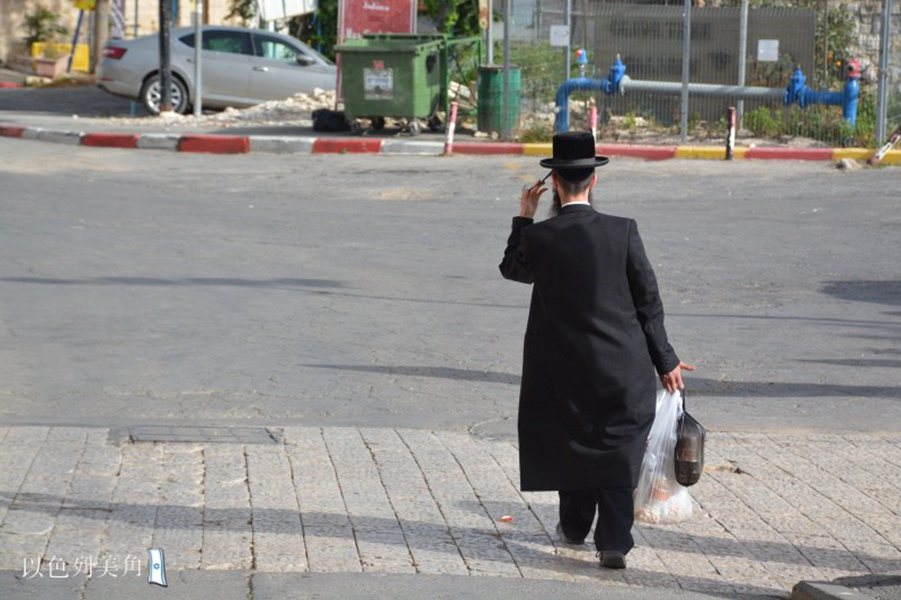If you have never seen a Jew dressed in a typical Jewish way, you might be confused with the appearance. It really seems like biblical characters all come alive! And that’s the way it’s supposed to be because God has not changed His ‘mitzvot’ (commandments). What are these things Jews wear or use? What’s the reason they have such look? And how should we as Christian see the ‘Jewish look’?
We will take a look at
- Tefilin
- Payot
- Mezuzah
- Tzittzit
- Two-handled Cup
Tefillin
At places where Jews pray, you’ll definitely notice this black box on the forehead! (And on more on the arm). This is called Tefillin. In side these boxes are scrolls of parchment from the Torah. (By the way, don’t call it phylacteries! It’s not an amulet!)

The tradition of using tefilin comes from the Bible. When the Israelites came out from Egypt, God reminded them not to forget God and to keep His commandments. God gave them clear instructions on how to live in His blessings. One of the commandments is….
“Hear O Israel, the Lord our God, the Lord is one. Love Adonai your God with all your heart and with all your soul and with all your strength. These words, which I am commanding you today, are to be on your heart. You are to teach them diligently to your children, and speak of them when you sit in your house, when you walk by the way, when you lie down and when you rise up. Bind them as a sign on your hand, they are to be as frontlets between your eyes, and write them on the doorposts of your house and on your gates. (Deu 6:4-9 )
Theses verses above form the Shema prayer, which is what Jewish people pray everyday. Binding with straps and wearing tefilin on hand and “between the eyes” is still important to Jewish people today because God’s commandment has not changed. (Just like God has not forsaken Jewish people)
Tefilin from Jesus’ time was found in Masada and Qumran (where the Dead Sea Scrolls were found). You’ll see a tefilin from 2000 years ago below! (Yes the small piece that looks like leather, closest to us) The scrolls of parchment were also found inside these ancient tefilin, although the size was much smaller back then.
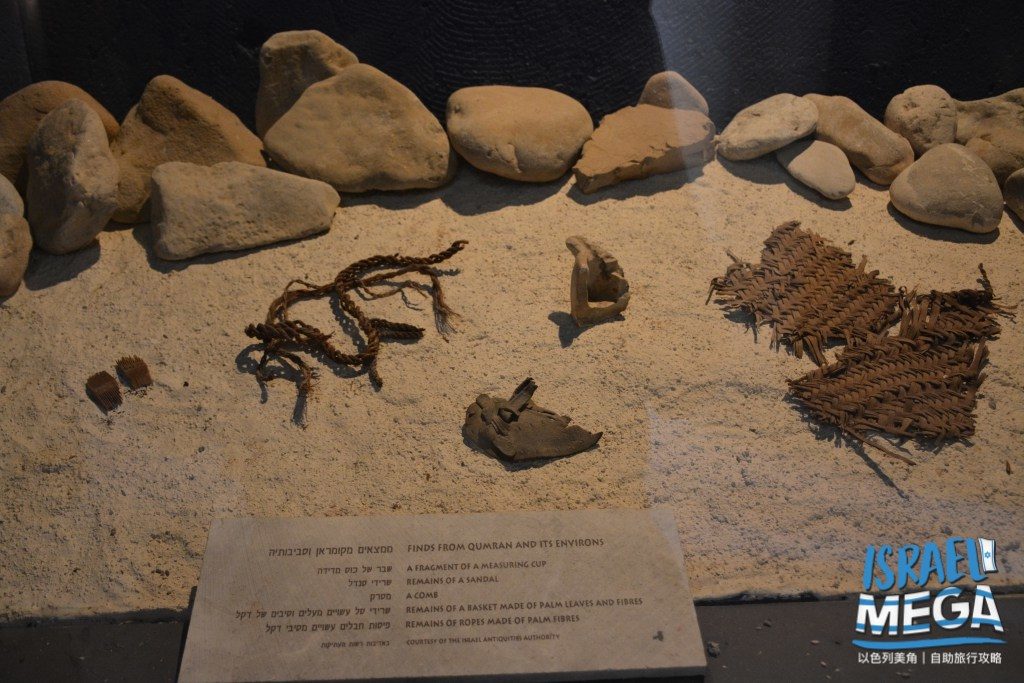
Payot
Tefilin usually goes with this hairstyle called “payot” (פְּאַת), because God said they cannot cut off hair from the sides. This side curls clearly sets Jewish people apart from the rest of ‘gentiles’.
“You are not to round off the hair on the sides of your heads, nor are you to mar the edge of your beard. (Lev 19:27)
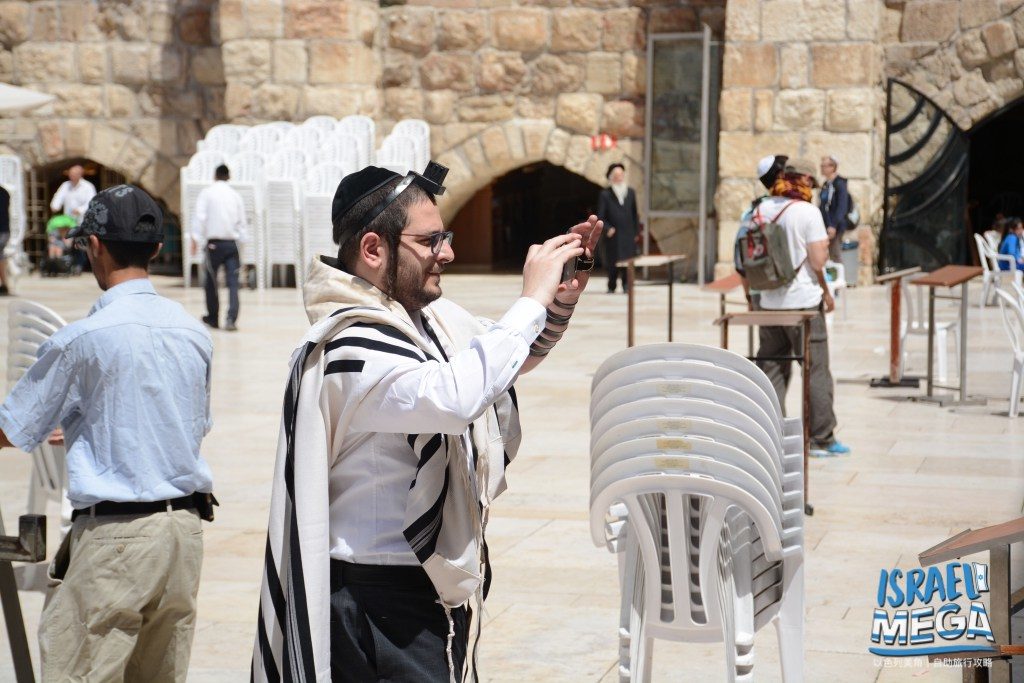
Mezuzah
From the commandment “write them on the doorposts of your house and on your gates”, so ‘mezuzah‘ can be commonly seen in Jerusalem. Not all but some of them have real scrolls of parchment inside. This giant mezuzah is next to Kotel (Western Wall).
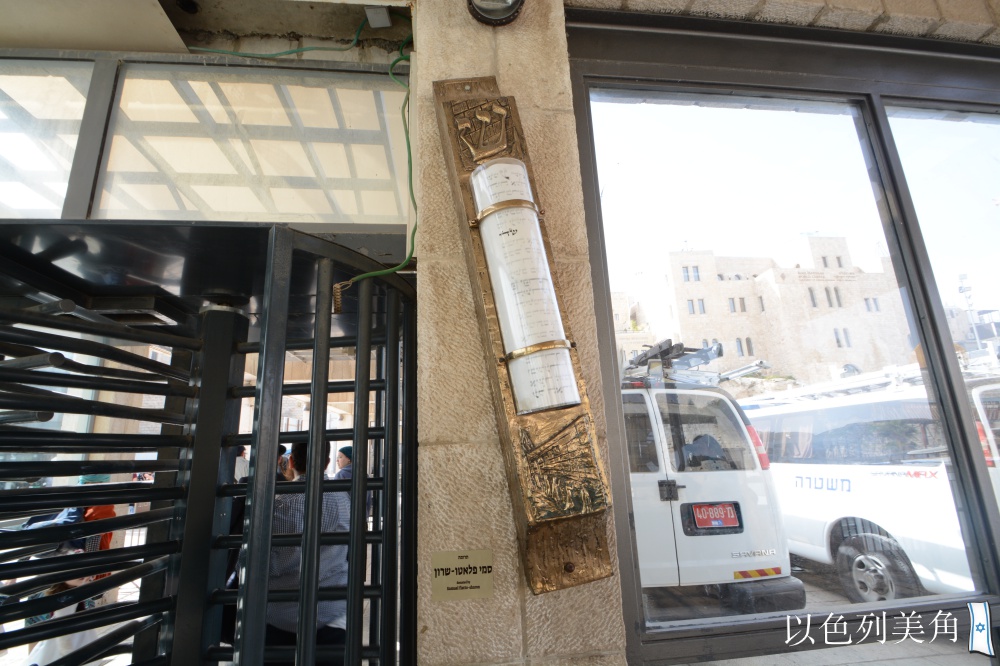
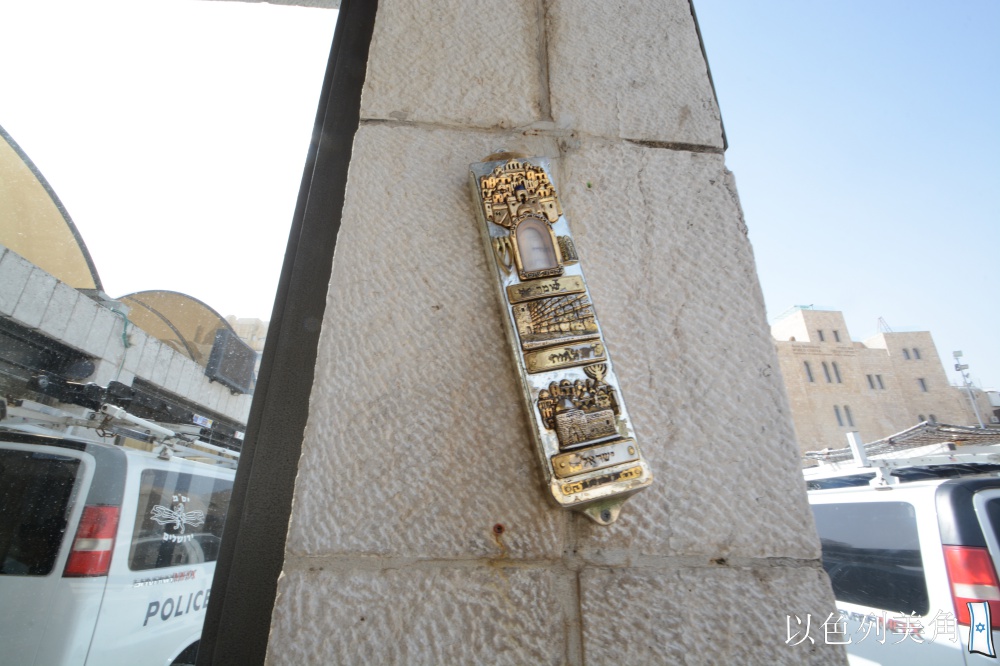
Tzitzit
And perhaps, you will notice tassels or fringes called ‘tzittzit’ that Jewish people wear on the corners of their clothes. It’s one of the mitzvot (commandments) for those who love God, as it’s super visible like payot. Whoever does it, others can easily identify those as ‘Bnei Israel’ (children of Israel). (Translating these words so the version below will not be confusing. Let’s learn some Hebrew!)
“Speak to Bnei-Yisrael. Say to them that they are to make for themselves tzitziton the corners of their garments throughout their generations, and they are to put a blue cord on each tzitzit. It will be your own tzitzit—so whenever you look at them, you will remember all the mitzvot of Adonai and do them and not go spying out after your own hearts and your own eyes, prostituting yourselves. This way you will remember and obey all My mitzvot and you will be holy to your God. I am Adonai your God. I brought you out of the land of Egypt to be your God. I am Adonai your God.” (Num 15:38-41)


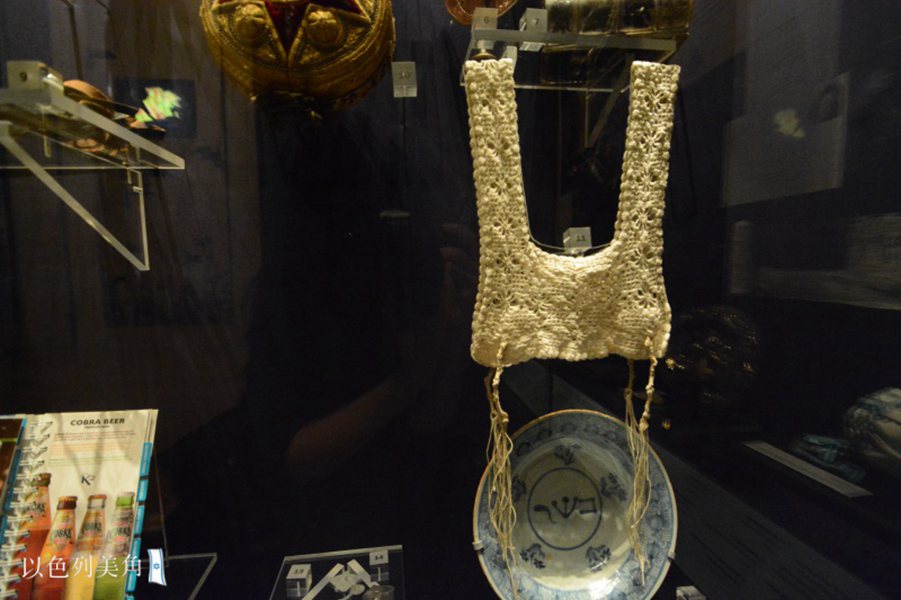
Yeshua (Jesus) Obeyed Commandments too!
God said “It will be your own tzitzit—so whenever you look at them, you will remember all the mitzvot of Adonai “. Since Jewish people still wear tzittzit, it means Jews in Yeshua (Jesus) time also kept this commandment. In fact, Yeshua himself kept this commandment!
Just then a woman, losing blood for twelve years, came from behind and touched the tzitzit of His garment. (Matthew 9:20)
And wherever He entered villages, towns, or countryside, people were placing the sick in the marketplaces and begging Him to let them touch even the tzitzit of His garment—and all who touched it were being healed. (Mark 6:56)
If Yeshua kept this commandment, and he was a rabbi, wouldn’t it be safe to say he also had payot and tefilin?



